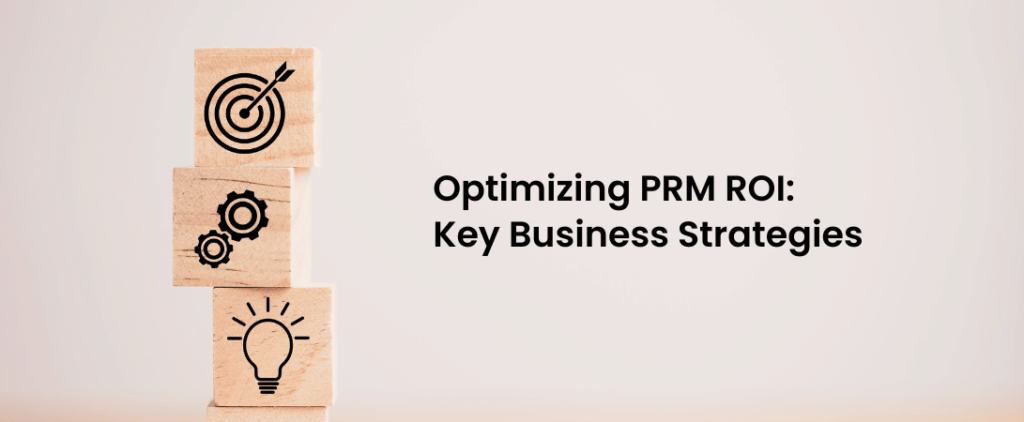Traditional partner relationship management (PRM) systems have long been the backbone of channel sales strategies. However, as ecosystems grow more complex, businesses demand a more sophisticated approach to PRM—one that drives measurable ROI. Next-gen PRM solutions go beyond basic partner portals, offering advanced automation, AI-driven analytics, and seamless integration with broader sales and marketing ecosystems, as well as other business tools.
For organizations investing in partner relationship management (PRM), the ultimate goal is clear: maximize return on investment (ROI). But how exactly does next-gen PRM accomplish this? Let’s explore.
Core Features That Drive ROI in Next-Gen PRM
1. Automated Partner Onboarding and Training
Manual onboarding processes slow down channel partners’ productivity, leading to delayed revenue generation. Next-gen PRM automates partner onboarding with AI-driven workflows, interactive training modules, and personalized learning paths. Businesses that leverage automated onboarding see faster partner activation and higher engagement rates, directly improving revenue streams.
2. Comprehensive Partner Enablement Tools
Next-gen partner relationship management (PRM) software provide centralized access through a partner portal to sales and marketing collateral, deal registration, and product certifications. These enablement tools ensure partners have everything they need to sell effectively, reducing friction in the sales process and increasing deal closure rates.
3. Data-Driven Performance Tracking
A key feature of next-gen PRM is AI-powered analytics that track sales metrics, partner performance, sales velocity, and engagement metrics in real-time. Businesses can identify top-performing partners, optimize resource allocation, and refine channel strategies based on actionable insights.
4. Integrated Marketing Automation
Marketing support is often a weak link in traditional partner relationship management (PRM) systems. Next-gen PRM integrates seamlessly with partner marketing automation (PMA), allowing partners to co-brand assets, run automated campaigns, and track marketing ROI. This drives higher lead conversion rates and better alignment between vendors and partners.
5. Intelligent Deal Registration and Conflict Management
Conflicts over deal ownership can erode partner trust and reduce revenue potential. Advanced partner relationship management (PRM) systems use AI to assist channel managers in enforcing deal registration policies, detect conflicts proactively, and ensure fair lead distribution. This results in a more transparent, partner-friendly ecosystem.
The Role of AI in Next-Gen PRM
AI is at the core of next-gen PRM, revolutionizing how businesses manage partner relationships and drive performance. Key AI-driven functionalities include:
- Predictive Partner Insights: AI analyzes historical data to identify high-potential partners, forecast sales outcomes, and optimize resource allocation.
- Automated Content Recommendations: AI-driven PRM suggests relevant marketing materials and training modules based on partner behavior and sales performance.
- Chatbots and Virtual Assistants: AI-powered chatbots provide real-time assistance, answering partner queries, resolving issues, and ensuring smooth interactions.
- Sentiment Analysis: AI evaluates partner engagement levels and sentiment through communication channels, allowing vendors to proactively address concerns and enhance relationships.
By integrating AI into partner relationship management (PRM), businesses gain deeper insights, improve partner experience, and achieve greater efficiency in their channel management strategies. This integration also helps businesses manage global partner ecosystems effectively, addressing diverse challenges and ensuring compliance while leveraging technology to enhance partnerships.

Optimizing PRM ROI: Key Business Strategies
1. Align PRM with Business Objectives
To maximize ROI, businesses must align PRM investments with their broader sales and marketing strategies. Defining key performance indicators (KPIs) such as partner-sourced revenue, deal conversion rates, and time-to-revenue helps track the system’s impact effectively, ultimately driving business growth.
2. Leverage AI and Predictive Analytics
Next-gen partner relationship management (PRM) software utilize AI to provide predictive insights, such as which partners are most likely to succeed or which marketing assets yield the best engagement. Businesses leveraging AI-driven recommendations can optimize partner strategies and maximize partner revenue.
3. Encourage Partner Engagement with Gamification
Many partner relationship management (PRM) software incorporate gamification elements such as leaderboards, rewards, and tier-based incentives. These motivate partners to complete training, register deals, and actively engage with the vendor’s ecosystem.
4. Enhance Collaboration with Integrated Communication
Modern partner relationship management (PRM) software feature built-in communication tools, including chat, discussion forums, and video conferencing. These features foster real-time collaboration, strengthening relationships between vendors, partners, and the sales team, leading to improved alignment and performance.
5. Implement a Strong Partner Tiering System
Segmenting partners based on performance, certifications, and sales contributions ensures that incentives and resources are allocated strategically. High-performing partners should receive premium support, co-marketing funds, and exclusive deal opportunities to maximize mutual growth.
Real-World ROI Gains from Next-Gen PRM
Several organizations have reported significant ROI improvements after adopting a next-gen partner relationship management system. Case studies indicate:
- 30-50% faster partner onboarding, leading to quicker revenue generation.
- 20-40% increase in partner-driven revenue, attributed to better enablement and engagement.
- Improved lead-to-deal conversion rates, due to AI-driven deal registration and marketing automation.
- Higher partner retention rates, owing to superior support and engagement strategies.
Investing in next-gen PRM is no longer optional—it is a strategic necessity for businesses looking to maximize partner-led growth. By leveraging automation, AI-driven insights, and integrated marketing tools, organizations can significantly enhance their partner programs and drive higher ROI. To stay ahead, companies must continuously optimize their partner relationship management (PRM) strategy, ensuring partners remain engaged, productive, and aligned with business objectives.
